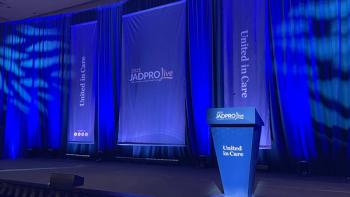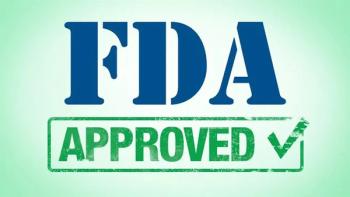
Opinion: Artificial Intelligence Enhances Precision in HER2 Scoring for Breast Cancer
Oncology nurses can help advocate for AI-assisted diagnostic improvements.
When you think of artificial intelligence (AI), what comes to mind? Maybe self-driving cars or virtual assistants. But did you ever imagine AI playing a role in diagnosing cancer? Today, artificial intelligence is transforming oncology by offering new ways to analyze pathology results with precision. One of the areas it’s affecting is HER2 testing for breast cancer, where AI is helping refine diagnoses and identify patients who could benefit from targeted therapies.
Traditionally, HER2 status has been determined by immunohistochemistry (IHC) and in situ hybridization (ISH), distinguishing HER2-positive from HER2-negative cases. However, recent research from the DESTINY-Breast04 trial (NCT03734029) has underscored the need to identify “HER2-low” patients: those with lower HER2 protein expression who might still benefit from HER2-targeted treatment. With the FDA’s approval of fam-trastuzumab deruxtecan-nxki (Enhertu; T-DXd) for HER2-low breast cancer, there’s an increased focus on accurately identifying these patients. AI-driven image analysis has emerged as a promising approach, offering an objective way to detect subtle HER2 levels and potentially improving consistency in HER2 scoring.1
AI-Assisted HER2 Scoring in Breast Cancer
Krishnamurthy et al. examined AI-assisted HER2 scoring in breast cancer using slides from 120 patients across four pathology labs in the United States, France, and Israel. The samples, collected from 2021-2022, included various breast cancer subtypes and HER2 scores ranging from 0 to 3+. HER2 IHC slides were processed with different antibodies, scanned at high magnification, and then anonymized and reviewed.1
The Galen Breast HER2 AI algorithm, developed by Ibex Medical Analytics, analyzed whole-slide images in 6 steps: identifying tissue fragments, detecting on-slide controls, pinpointing invasive tumor regions, classifying individual tumor cells by HER2 staining intensity and completeness, assigning a HER2 score based on American Society of Clinical Oncology (ASCO) and College of American Pathologists (CAP) guidelines, and finally displaying a visualization of the for the user.
In this study, 5 expert breast pathologists initially reviewed and scored HER2 IHC whole-slide images without AI assistance to establish a ground truth (GT). However, their agreement was not always consistent, with complete consensus on only 44.2% of slides. For high-confidence GT—defined as at least four out of five experts agreeing—pathologists concurred on 76.7% of the slides, highlighting variability in scoring for HER2.
In a crossover design, 4 general pathologists reviewed the slides digitally with and without AI assistance, and their results were compared with the GT established by the expert breast pathologists. Each reader scored the slides in both arms (manual read vs AI-assisted read), with a 2-week washout period between reads, remaining blind to others’ scores. Concordance rates between reader scores and GT scores were calculated, as well as inter-observer agreement with and without AI.
When the 4 general pathologists scored HER2 IHC slides manually (arm A) and then again with AI assistance (arm B), notable improvements were observed. The inter-observer agreement among these pathologists increased from 69.7% without AI to 77.2% with AI support, with the most significant improvement observed for HER2 0 and 1+ scores. The AI tool helped enhance accuracy in distinguishing between these lower scores, which is critical for determining eligibility for HER2-targeted therapies. For slides where the GT had high confidence, agreement among the pathologists improved from 75% without AI to 83.7% with AI.
When directly compared with the GT scores, the AI reached 100% accuracy for HER2 3+ cases, followed by 92.6% for HER2 0, 90.3% for HER2 1+, and 87.5% for HER2 2+ scores, leading to an overall accuracy rate of 92.1%. These findings demonstrate the potential of AI to enhance pathologist confidence and consistency, especially in challenging cases where scoring discrepancies often occur.
Nursing Considerations
Nurses play a key role in educating patients about HER2 testing and its importance in guiding breast cancer treatment decisions. Given the challenges pathologists may face with consistent HER2 scoring, the integration of AI could enhance diagnostic accuracy. Nurses can advocate for the use of advanced technologies like AI to reduce discrepancies and improve the precision of diagnosis.
It is important to note that HER2 testing is relevant not only for breast cancer but also for other types of cancer, such as gastric and esophageal cancers. HER2 status can influence treatment decisions in these cancers as well, making accurate testing and diagnosis essential across multiple cancer types.
Improvements with the Galen Breast HER2 AI tool could have significant implications for patient care, as precise HER2 scoring is crucial in guiding therapeutic decisions. The study reinforces AI’s value in supporting clinical decision-making.
Reference
Krishnamurthy S, Schnitt SJ, Vincent-Salomon A, et al. Fully Automated Artificial Intelligence Solution for Human Epidermal Growth Factor Receptor 2 Immunohistochemistry Scoring in Breast Cancer: A Multireader Study. JCO Precis Oncol. 2024;8:e2400353. doi:10.1200/PO.24.00353
Newsletter
Knowledge is power. Don’t miss the most recent breakthroughs in cancer care.
















































































